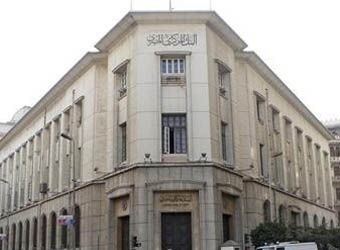Balance of Payments posted a total deficit of US$ 8 billion in from the period from July to December in FY 2011/2012, while it posted a total surplus of US$ 571.7 million from the period from July to December in FY 2010/2011. This deficit has contributed in the decline in net foreign reserves at Central Bank of Egypt.
CBE said in a statement on Sunday that this total deficit resulted from the increase in the current deficit with 58.3% and the increase in net capital outflows.
The current deficit increased to US$ 4.1 billion, compared to US$ 2.6 billion at the same period of last year. Regarding capital account, net outflows reached US$ 2.4 billion, while net inflows reached US$ 2.8 billion.
Deficit in balance of trade reached US$ 15.6 billion in the period from July to December 2011, compared to US$ 14.5 billion in the period from July to December 2010, because the balance of payments exceeded the value of imports of goods with 7.5% as it registered US$ 29.2 billion. Exports of goods increased by 7.3% as it reached US$ 13.6 billion.
Balance of services surplus declined by 44.1% as it reached US$ 3.1 billion in the period from July to December in 2011, compared to US$ 5.6 billion. This retreat resulted from the 27.1% decline in tourism revenues as they reached US$ 5.1 billion, compared to US$ 6.9 billion.
Number of tourism turnover retreated by 12.7% as the average tourist spending retreated to US$ 72.2 per night in the period from July to September 2011, and to US$ 69.6 in the period from October to December in 2011, compared to US$ 85 in the period from July to December 2010. However, Suez Canal revenues rose by 7.0% achieving US$ 2.7 billion, compared to US$ 2.5 billion.
Net transfers increased by 32.9% reaching US$ 8.4 billion in the period from July to December in FY 2011/2012 as a result of the increase in net private transfers (mainly transfers from Egyptians living abroad) by 28% as it reached US$ 7.9 billion (compared to US$ 6.2 billion) and in net official transfers as it reached US$ 522.7 million (compared to US$ 167.3 million) resulted from the increase in monetary grants offered to Egyptian government.
Securities investments net outflows reached US$ 3.3 billion, while investment net inflows reached US$ 4.6 billion in the compared period, because foreigners sold their securities mainly treasury bills whose net sales reached US$ 2.8 billion, while net purchases reached US$ 3.1 billion.
Direct foreign investment in Egypt posted a net outflow of US$ 418.1 million, while net inflow reached 2.3 billion in the compared period, because net investments in petroleum sector recorded a net outflow of US$ 2.1 billion, while net inflow reached US$ 607.2 billion). Net investments imported to establish companies or to raise their capitals as it reached US$ 1.4 billion (compared to US$ 1.6 billion).
Balance of payments posted a total deficit of US$ 18.3 billion in the period from January to December 2011, while it posted a total surplus of US$ 1.3 billion in the period from January to December 2010. This deficit contributed in the decline in net international reserves at Central Bank of Egypt in 2011. This deficit resulted from retreat in tourism revenues with 30.5% as they reached US$ 8.7 billion in 2011, compared to US$ 12.5 billion in 2010.
Securities investments net outflows reached US$ 10.4 billion in 2011, while net inflows reached US$ 10.9 billion in 2010, as foreign investors sold their securities mainly treasury bills whose net sales reached $ 8.9 billion in 2011, while net purchases reached US$ 7.0 billion in 2010.
Direct foreign investment in Egypt posted a net outflow of US$ 482.7 million in 2011, while net inflow reached $ 6.4 billion in 2010.
Two main positive factors were; the increasing of transfers of Egyptians’ abroad to $ 14.3 billion in 2011, comparing to $ 12.5 billion in 2010 and the increasing of Suez Canal’s revenues to reach S$ 5.2 billion, compared to $ 4.8 billion.





